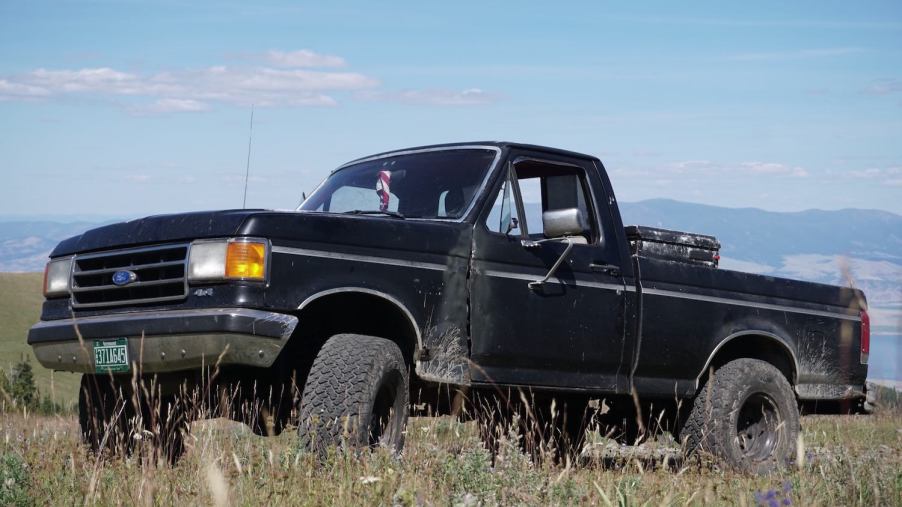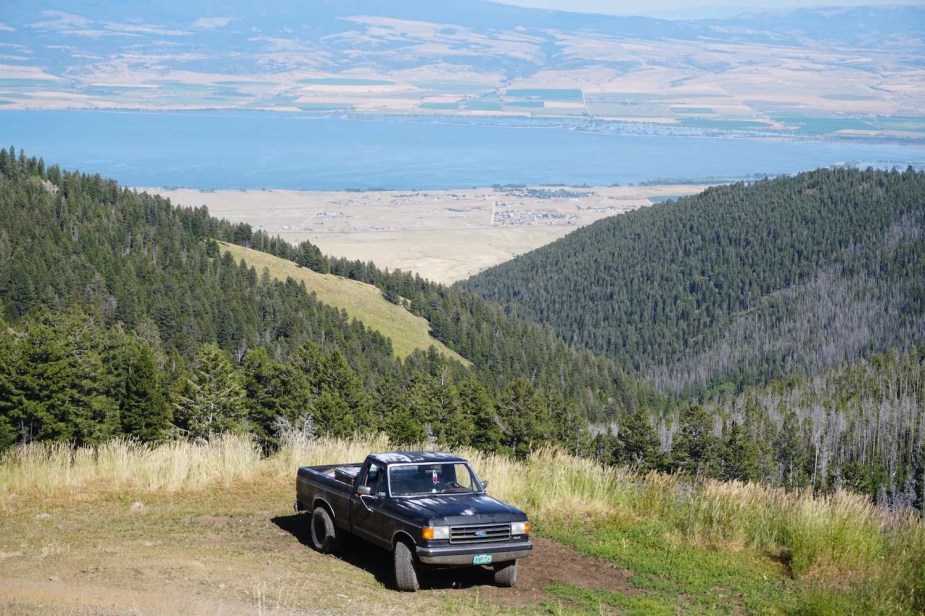
Can You Make Old Trucks (And Cars) Reliable?
“Hey, you want a push? We could get you out of the street.” I looked up from under my hood and saw a round-faced man smiling at me. “You can work on it in my parking lot, just there, long as you need.” As my savior and his friends pushed the 1988 F-150 truck that I’d been driving cross-country off the street, I wondered, Is it even possible to make old trucks truly reliable?
Can an old truck be reliable?
How reliable old trucks or cars are depends on what make and model you buy and how many components you’re willing to test or replace. Certain things, such as antique wiring, will never be as trustworthy as in a recently built vehicle. But a savvy driver can monitor other components–such as the drivetrain–and stay ahead of wear.

Some shops do offer full restorations on old cars and trucks. When you swap every item prone to wearing out, the result is a vehicle as reliable as when it was brand new. Restomod shops go further and improve on the components an antique vehicle had when brand new. They can often improve on its reliability.
But for the sake of this article, I will share what you can do to an older daily driver or rolling project car to try to avoid being stranded–like I was.
Swap everything that spins!
One framework I’ve found useful for thinking about old cars and trucks is that every spinning component generates friction and will wear out eventually. These “things that spin” range from the wheel bearings the vehicle rides on to the water pump attached to the engine.
The “engine peripherals” are the most likely to fail without warning. When they do fail, they can leave you stranded. Or worse yet, they can damage other components. These are:
- Water pump
- Oil pump
- Fuel pump
- Alternator
- Starter
- Ignition coil (kind of)
These can be the Achilles heels of old cars and trucks–depending on the make and model. If you are hoping to rely on a classic, it is worth testing each of these components. If you choose to swap them, it’s not a bad idea to keep the “known good” one you took out around. That way, you have a spare.
As you research each of these systems, you’ll likely uncover additional components worth testing and/or replacing. For example, my 1988 Ford F-150 has two fuel pumps: one inside the gas tank and one closer to the engine to increase the fuel’s psi. And when I replaced the ignition coil, I was careful to order one that came attached to the additional ignition system components unique to that make and model.
That sounds expensive…
I was once sitting at a bar when the bartender told a regular that her car had started making noise. Without missing a beat, the regular (who I later learned was a mechanic) asked, “Do the noises sound expensive?”
We are all familiar with unwelcome and “expensive” vehicle noises. Examples include loud noises from our engine, transmission, or axles. (Sidebar: You can often isolate which system is causing the noise by revving the engine while parked or by shifting into neutral–safely–while cruising). We all dread our old cars or trucks developing an “expensive” noise.
But the truth is that “expensive noises” rarely pop up out of nowhere. You can often catch them early if you know what to listen for. This is because components such as your axles, transmission, and transfer case, usually give you ample warning before leaving you stranded.
It’s wise to spend some time listening to our old cars and trucks–with the radio off–every week. I’ve been known to drive along a building or through a narrow alley with my windows down–just to hear the echo. You can even drive by while a friend listens or records. It’s smart to get used to the noises your older car or truck makes, so you’ll have a spidey sense for any changes.
It’s an uphill battle
After driving my 1988 Ford F-150 across most of the country, I was idling at a stop light in Montana when my gauges went haywire. Then my engine died. I tried to crank it again. The engine turned over, but wouldn’t fire. Not even a cough.
Some good samaritans who worked at a nearby car wash volunteered to push me out of the street. They even offered me a nice, shady spot to troubleshoot. I stuck my head into the engine bay and smelled smoke. Then, I searched through the relays and fuses on the driver’s side front fender and found a fusible link had melted wide open, probably because of a grounded wire.
Laying under the truck, I traced some wires, and, sure enough, I found a wire that a previous owner had electrical taped in place that had finally bounced loose and grounded out against the frame. I was able to wire an in-line fuse into my harness where the fusible link had once been, and I was on my way.
Perhaps a more thorough mechanic than me would have found time to replace any shoddy old connections with proper, self-soldering heat shrink units. I know that after my Montana breakdown, I’ll certainly be reexamining anywhere else my wiring harness was previously modified or repaired.
But no matter what I do, 30+-year-old wires just wear out and break down. So, short of swapping my entire wiring harness (a time-intensive and expensive procedure that fans of old cars and trucks do complete anyway), I may break down again. Because I am fine traveling slowly and repairing things as I go, this is a risk I’m willing to take. But I am not sure I’d rely on the same truck for my daily commute.
There are many things you can do to make an old car or truck more reliable. But the hard truth is that short of a full restoration, it will always be more likely to leave you stranded than a new car.
Next, you can see previous articles in my build series. Part 1: Getting your money’s worth when you have a mechanic swap your clutch, Part 2: Can you salvage a rusty frame?, or Part 3: Are Radwood-era classics the worst vehicles to work on?
Or, you can watch Donut Media’s guide to your first project car in the video below:



